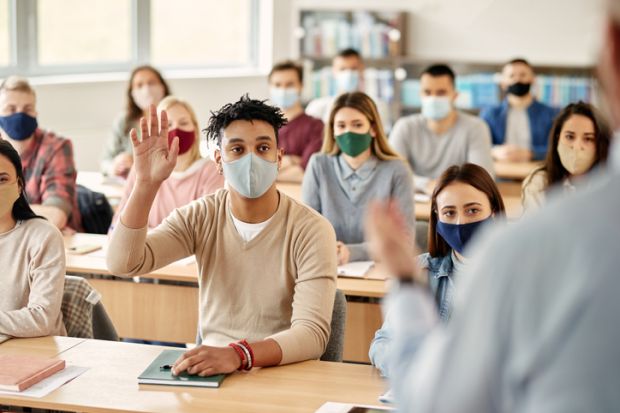Universities can expect coronavirus disruptions for at least another year, and they should minimise the risks by mandating the use of face coverings and limiting passenger numbers in lifts, according to an Australian health expert.
University of South Australia (UniSA) epidemiologist Adrian Esterman said Covid infection peaks were likely to recur at least until second-generation vaccines were introduced by pharmaceutical giants such as Pfizer and Moderna.
These vaccines, developed using both the original Wuhan strain and recent Omicron variants of the Sars-CoV-2 coronavirus, appear much more effective than existing medications at both limiting infections and reducing their severity. “They’re not the silver bullet, but they will certainly help reduce case numbers,” Professor Esterman said.
Even more promising was a generic vaccine against all coronaviruses, being developed by several manufacturers. “Whether these are going to work, we don’t know yet because they’re still experimental. But two-and-a-half years ago, we didn’t think we’d get a vaccine for Covid itself. I’m optimistic that we can get these available. They will be a game-changer. It doesn’t matter how much the virus mutates.”
Professor Esterman said generic coronavirus vaccines were unlikely to emerge before late 2023. In the meantime, new variants would continue to fuel infection spikes, with caseloads remaining relatively high between the peaks.
“The current wave might be over, but we’ve got [Omicron sub-variant] BA.4.6 on the horizon. It’s accounting for about 4 per cent of cases in the US at the moment, and we don’t know what happens when it hits BA.5 head to head. We’re getting a sub-variant every three to four months. We’re due for another one about September or October.”
He said “heaps and heaps” of staff and students were experiencing Covid-19 infections and reinfections. “We’re not getting down to low case numbers because vaccination alone isn’t good enough. We need additional public health measures like wearing face masks.”
Lift limits were another important and relatively simple measure. “You can get 20 students cramming into a lift – how safe is that?” Lift restrictions were being resisted out of concern that students would arrive late at lectures, he said. “Well, they’re young – they can go up the stairs, surely. Lifts could hold about four people safely. One person to one-and-a-half square metres would be sensible.”
On the advice of South Australia’s chief public health officer, UniSA recently reimposed an indoor mask mandate, which had been shelved in April. The mandate was removed again a week later as infections receded, but masks remain “strongly recommended”.
The university also wound back its decision to conduct all teaching and research remotely where possible, but lectures – which constitute around 20 per cent of its classes – remain online.
Deputy vice-chancellor Marnie Hughes-Warrington, a philosopher and historian, said public expectations of a short-lived crisis had been unrealistic. With over a century since the last major pandemic, people had forgotten that the impacts of history’s infamous epidemics – such as the 14th-century Black Death and the 17th-century Great Plague – had tended to last a decade.
“You’d normally be expecting waves around a pandemic – different diseases or the same, different perturbations normally around a decade.” While modern technology could reduce that period to five years or even three, “did we seriously think that we would be out of it in a year”?
Register to continue
Why register?
- Registration is free and only takes a moment
- Once registered, you can read 3 articles a month
- Sign up for our newsletter
Subscribe
Or subscribe for unlimited access to:
- Unlimited access to news, views, insights & reviews
- Digital editions
- Digital access to THE’s university and college rankings analysis
Already registered or a current subscriber? Login









